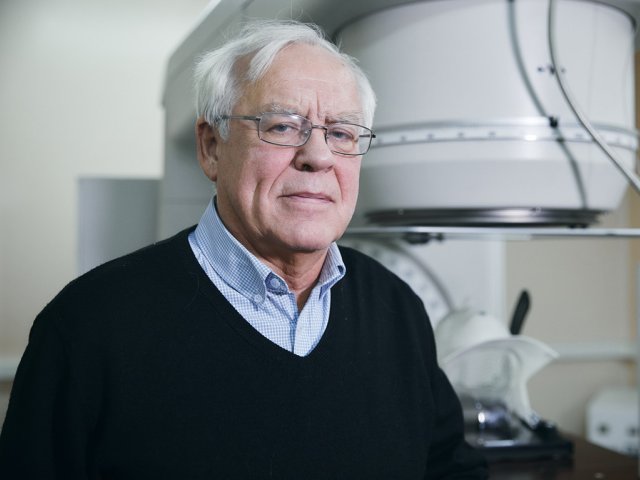Delicious food, spicy aroma, soft fabric, beautiful painting, gentle touch, coolness in the heat, warmth in the cold, a compliment, a hug, or a good joke. What do these completely unrelated concepts have in common? They all bring us pleasure in one way or another. But why is a sugar-glazed donut able to affect our mood? Why do we get pleasure from unreasonable spending at seasonal sales or enjoy touching a loved one so much? Scientists have been studying this since the beginning of the 20th century.
Electrical signals
Behavioral scientists began to explore pleasure from afar. They turned to behavior as a reaction to a certain stimulus, external or internal. One of the first experiments in this field was conducted by American psychologists James Olds and Peter Milner in 1954. It all started with the study of laboratory rats. The scientists decided to find out whether the rats would become uncomfortable when stimulating limbic systems with electric current.
The term limbic system was introduced in the scientific circulation just two years earlier by the American researcher Paul D. MacLean. According to the modern Great Medical Encyclopedia, the limbic system is a complex of structures of the final, intermediate, and middle parts of the brain responsible for sleep, wakefulness, emotions, motivation, and some other general conditions of the body. However, there is still no consensus on the structure of the limbic system.
Olds and Milner’s experiment consisted of the following: when rats got into a certain corner of the cage, they were subjected to an electric shock. To do this, electrodes were implanted in the animals’ brains. The hypothesis was simple: rats will start to avoid this corner if they experience pain or any other discomfort. The result was unexpected: after stimulation, the animals returned for a new portion of electric shock. When the animals were allowed to push the lever on their own, the rats stimulated themselves over and over again. Attempts to experience an electric shock reached up to seven hundred charges per hour. The subjects refused food and water, continuing to shock themselves.
The discovered part of the brain was named the “pleasure center” – this is the septal area adjacent to the corpus callosum, as well as a small part of the striatum – the nucleus accumbens. Subsequently, it became known as the center of “expectation of pleasure.”
It is believed that the limbic system is closely connected with the prefrontal cortex of the brain, which explains, for example, getting pleasure from solving problems. Doctors have even tried to treat severe mental disorders with surgical intervention in this area – through prefrontal lobotomy. As a result, the patient would become sluggish and lose motivation. Some tried to conduct experiments with the implantation of electrodes on humans, but they were banned quickly. The study of the “pleasure centers” gradually led to the discovery of the dopamine hormone.
Chemical processes
On the other hand, neurotransmitters – chemicals that transmit a signal between two neurons through a synapse, the place of their contact – are responsible for the sensation of pleasure. Paul Greengard studied one of the neurotransmitters, namely dopamine, in the 1960s. His research has not been recognized by the scientific community for a long time. “There was a moment when I fell into despair and thought that I was doing totally useless research,” admitted Paul Greengard.
It took the scientist 20 years to demonstrate that communication between brain cells occurs jointly due to chemical processes and electrical signals. Groups of phosphates inside cells trigger a chemical process that amplifies the dopamine signal, and this already leads to the formation of an electrical signal. The scientific work of Paul Greengard changed the approach to the pleasure perception and opened scientists’ eyes to the complexity of the processes occurring with neurotransmitters.
Among the most common neurotransmitters today we often hear about dopamine, serotonin, endorphin, and oxytocin. However, dopamine belongs to the pleasure area more than others. It is responsible for the feeling of satisfaction, and also forms motivation, a sense of reward, evokes desire and goal achievement. The very anticipation of victory contributes to the production of dopamine. It is unnecessary to commit an act at the same time. This is partly why the “pleasure center” was renamed to the center of its expectation. It is scientifically proven that as soon as a person reaches the desired, dopamine production decreases.
Dopamine also forms a sense of attachment and is produced in large quantities at childbirth. This is how scientists explain the phenomenon of boundless maternal love. Dopamine production is stimulated by touch, chocolate, and a full sleep or any activity, after which the expected reward comes. For example, a workout in the gym or a morning jog can raise the level of dopamine, if you are looking forward to how much more good-looking you will be afterwards.
The neurons of the very center responsible for the expectation of pleasure release dopamine in the process of responding to a certain pleasant stimulus for a person or anticipation of receiving it. The stimulus can be any: external and internal, sensual, and purely pragmatic. The production of dopamine can be about the same as from a favorite meal in a restaurant, or from the smile of a loved one. That’s how our body works.
Neurotransmitters
The sensual side
Psychologists are still trying to trace the connection between pleasure and happiness by creating an orderly system. However, it is not so easy to identify the neural correlates responsible for a good mood and a state of complete happiness. Psychologists Morten Kringelbach and Kent C. Berridge distinguish three components of the reward system: propensity (chemical reaction to a stimulus), desire (volitional effort to receive a stimulus), and learning (associative series associated with receiving a stimulus). As soon as we satisfy the incipient inclination, we will experience pleasure. To do this, we need the desire and motivation that will launch the process of achieving the goal.
The philosophical category of “happiness,” according to researchers, is achieved by balancing these three components, but science has not yet explained how to achieve it. According to recent studies, only areas of the brain that enhance the feeling of pleasure have been identified. This is a separate zone, not connected with the previously studied place of origin of pleasant sensations. Pleasure increases when the pleasure and reward systems begin to interact. The discrepancy in these systems leads to the appearance of painful addictions, and their correct interaction can become the basis for new methods of treating depression.
The article is based on open sources.Фото на странице и на главной странице сайта: Surface / Фотобанк Unsplash























